Our red cabbage comes "from German cultivation". That's what it says on the packaging of Mildessa red cabbage - and that's what we stand for. On this page you find out why this is so important to us. We also show you the journey from the cultivation of the red cabbage to the final product. It starts in the field - and finds its grand finale on your plate. Follow us!
Red cabbage production: From the field to your plate
Here we show you how and where good red cabbage becomes our best Mildessa red cabbage.

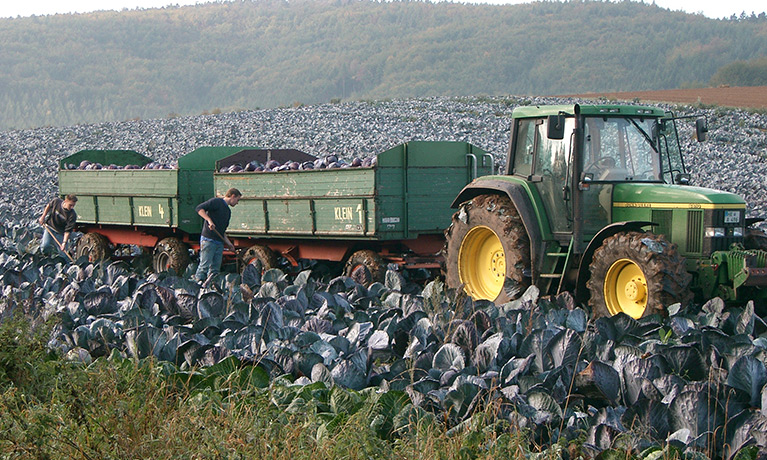
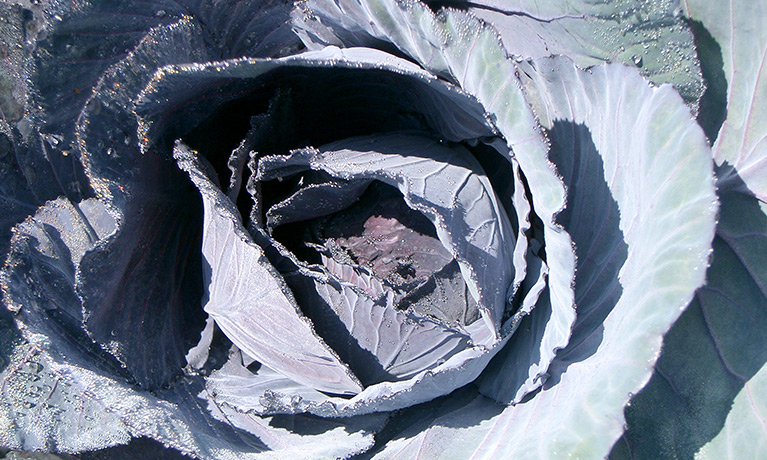
For many people, Mildessa red cabbage from Hengstenberg is a true classic - for example, as a side dish for a festive meal. And Hengstenberg has been producing aromatic red cabbage in Germany for many decades - from sustainable farming and without preservatives. We pay special attention to the quality of our red cabbage products – starting with the raw material to the gentle processing in our factories. In the end, you want to enjoy the typical taste of our red cabbage.
By the way: There are many similarities in the production of red cabbage and sauerkraut (from white cabbage).
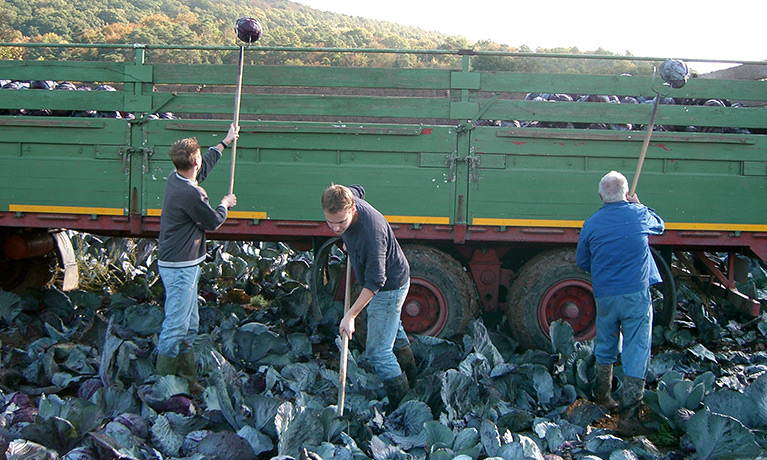

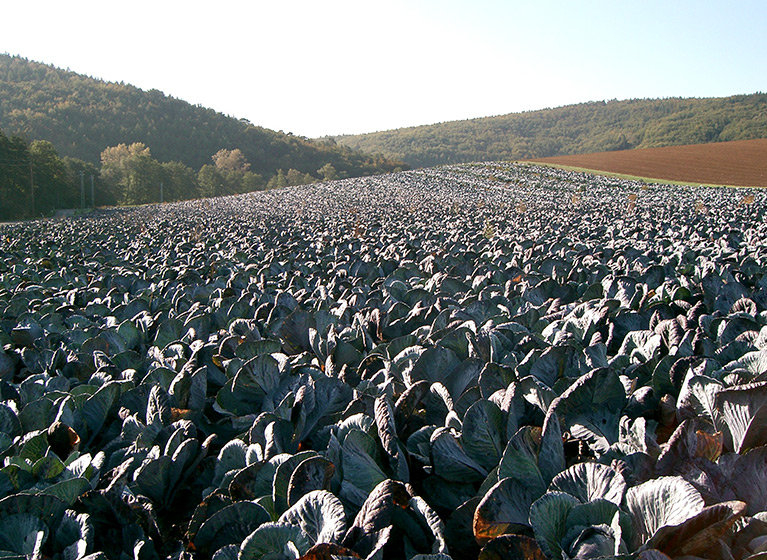
Red cabbage cultivation: on fields near our factories
At the end of April, beginning of May, our contract farmers sow the red cabbage seeds in their fields. Where are these fields? Very close to our production sites. Because proximity is important to us. Almost all farmers have their farms within a distance of about 25 km from our factories. That's why the home of our red cabbage and that of the farmers is also the home of Hengstenberg.
Our farmers are true red cabbage professionals. They know all the varieties and what red cabbage needs. In good times, but also in bad times - like droughts, which we have already had to deal with in our company history. Of course, the quality has to be right for our consumers. And quality also has a lot to do with a trusting cooperation and consistency. We attach great importance to this. Many of our contract farmers have been working with us for two generations or longer.

The red cabbage harvest: by hand and with cabbage harvesters
Autumn is harvest time for the red cabbage. This is done either by hand. The harvest workers cut off the red cabbage below the stalk with large knives and lay them in long lanes on the field. Then a tractor arrives - and with long forks the helpers lift the 3-4 kilogram cabbages onto the trailer. This is hard work, but it is worth it for the good taste of our Mildessa red cabbage. However, some of our farmers also use machines for harvesting. Either specially developed cabbage harvesters or converted beet harvesters. Both separate the cabbage at the stalk so the red cabbage heads can roll on a conveyor belt into the trailer.
Good to know for you: There's already a quality check during harvest. We check the cabbage for visible defects. If some leaves are wilted or broken, they remain directly in the field as natural fertilizer for the next red cabbage. We would also find the leaves in the production and sort them out.

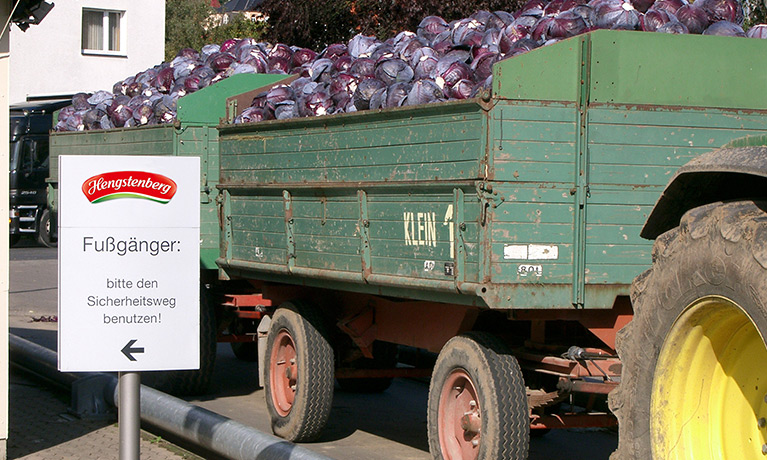
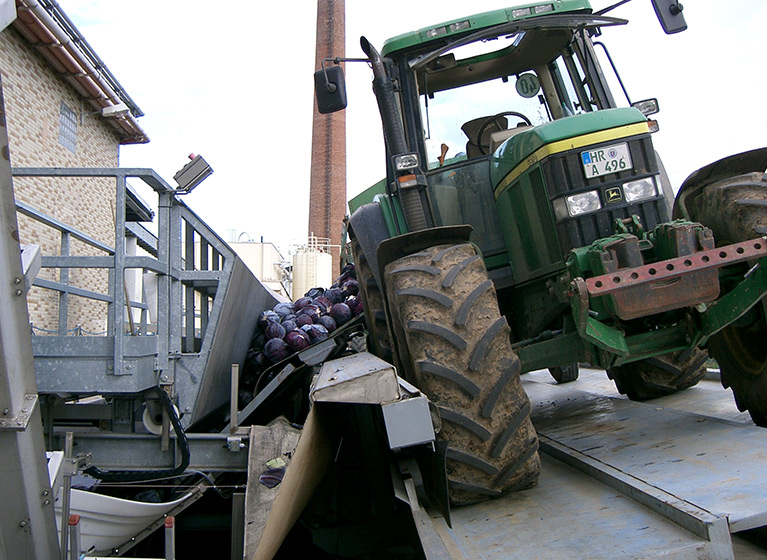
Short routes to the factory for production
The red cabbage arrives at our factories on the tractors - or better: it arrives in front of them. The tractors drive up to height-adjustable ramps and tilt their trailers. This is how the red cabbage rolls on conveyor belts towards production halls.
At our plant in Fritzlar, we have even created a very special device for this purpose: Here, a gigantic ramp allows us to tilt an entire team of trailers. This allows us to unload up to two trailers at the same time quickly and gently for the cabbage.

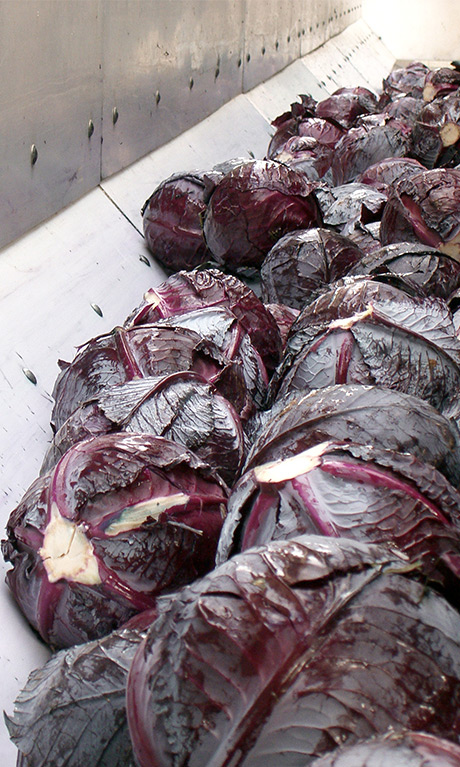

Real red cabbage craft: drilling and planing
The red cabbage then moves on conveyor belts to the production hall. Spirals remove loose outer leaves, which are returned to the farmers trailer so they can use the leaves as fertilizer. We consistently sort out leaves or whole cabbages that do not meet Hengstenberg's strict quality requirements at this point. Then we drill out the woody part of the cabbage stalk with a stalk drill. You might be wondering when the red cabbage is washed? The answer: not at all. It is simply not necessary, because the cabbages heads are closed. This saves a lot of water - a contribution to our sustainable energy management. Once the stalk and leaves have been removed, our cabbage slicer with its two rotating discs slices the red cabbage into fine strips.
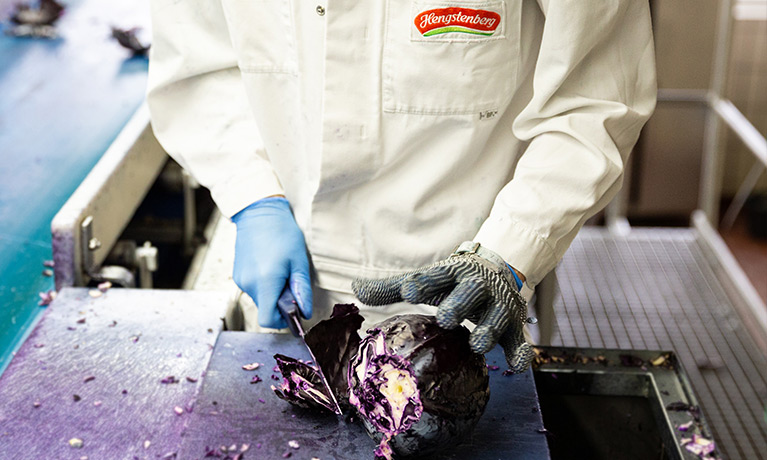

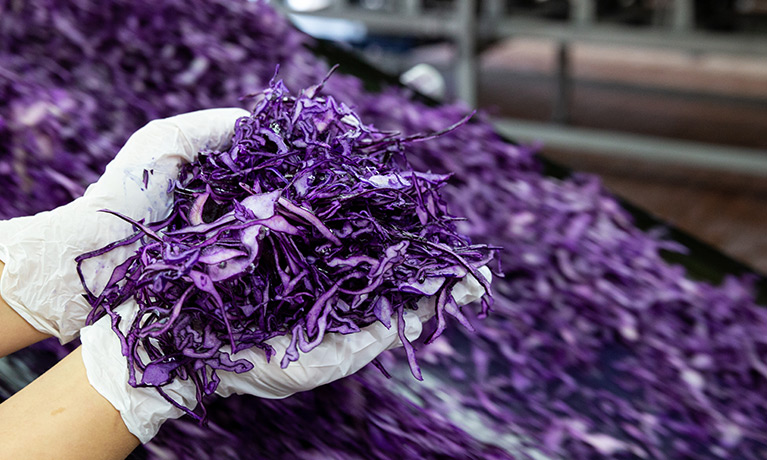

Boil down the red cabbage: It gets aromatic
Now we season the red cabbage strips. To do this, we use traditional family recipes that we have refined over the years. Thus, over time, different varieties of Mildessa red cabbage have been created. With the right seasoning and a little water, we boil down the red cabbage.
Fill, pasteurise and pack: Making red cabbage perfect for you
Mildessa red cabbage comes in tins, jars and pouches. We clean them thoroughly with compressed air before we fill the red cabbage into them and seal everything. Each package is given a special code so that we can trace the filling date and other information at any time.
Preserving the red cabbage
The tins, jars and pouches now go into the pasteuriser, because we want to preserve them. A pasteurizer is something like a big pressure cooker in which our red cabbage stays for a certain time at a certain temperature and is thus preserves. But we don't tell you how long the red cabbage stays in it and how high the temperature is. This is a strictly guarded family secret.
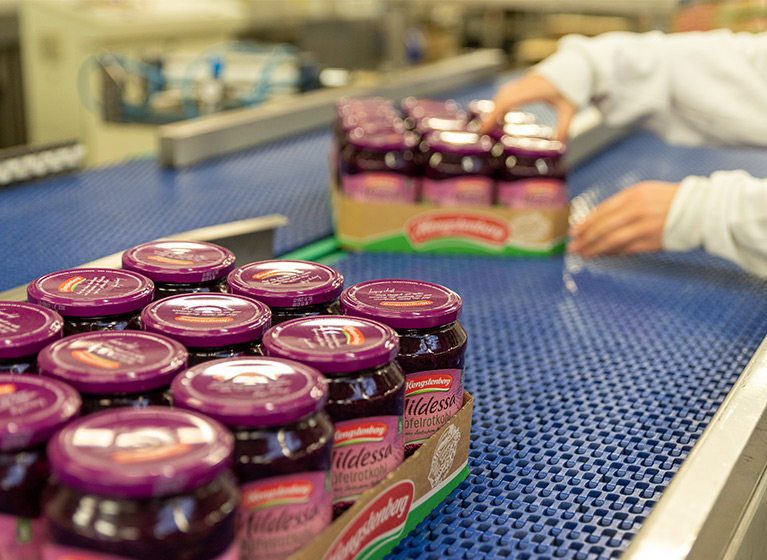
Making the red cabbage "ready for shipment“
After pasteurisation, the label is attached so that you can immediately recognize our Mildessa red cabbage when shopping. By the way, we use paper labels and not plastic ones. Afterwards we pack the final product in cartons, stack them on pallets - and off they go to our warehouse. In the warehouse, the red cabbage is just waiting to be finally delivered so that you can enjoy our Mildessa red cabbage at home.

On this page we have explained the most important steps of red cabbage production to you: Cabbage from German cultivation, gently processed and traditionally seasoned - that's what makes our Mildessa red cabbage so unique in taste. Did you get hungry and want to bring the delicious taste of red cabbage into your kitchen? Then visit our recipes section and get inspired.



